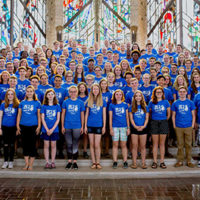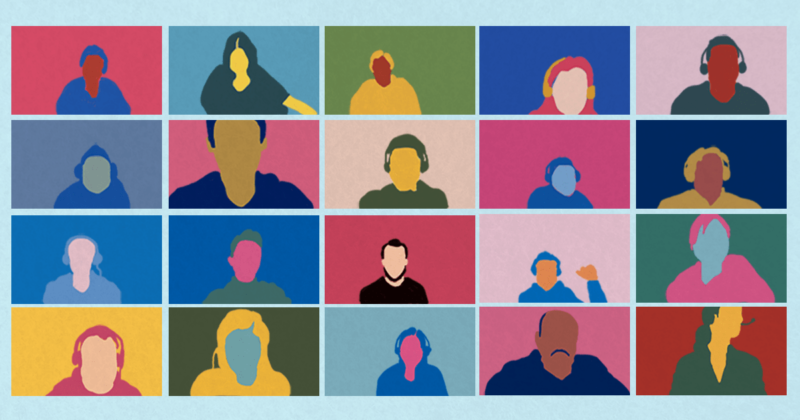Prior to my role with the Christopher Family Foundation (CFF), I developed professional learning programs at Chicago Shakespeare Theater. There I met hundreds of incredible educators, and together, we learned and practiced new teaching strategies. We prioritized making space for teachers to bring their own lived classroom experiences and pedagogical expertise to the table, to develop modifications for their unique students and classroom settings. And over time, we built a rich, collaborative learning community of teacher colleagues across the city.
When I joined CFF exactly one year ago today, I was delighted to see that the foundation supports educator professional development, as the impact of one excellent teacher has the power to affect thousands of students over the course of a career. I promptly dug into exploring the various ways that professional learning is designed and executed within our portfolio of grantees, and I’ve been so impressed by the ways in which our partners are also building rich teaching and learning communities in areas like science instruction, social science, and civics.
Enter COVID. This spring, as we all slowly came to the realization that things wouldn’t be getting “back to normal” anytime soon, I wondered—what is the best way to support teachers as they navigate an entirely new way of teaching? What should teacher professional learning look like now?
I would find answers to these and many more questions as I sat in on virtual professional learning programs across our partner network. As always, I am awed by the ingenuity and rich content our organizations are sharing to help support teachers in this moment. A huge thank you to Chicago Zoological Society (CZS), Facing History and Ourselves, and Museum of Science and Industry (MSI) for allowing me to peek into your virtual classroom spaces and learn alongside your teachers.
The Christopher Family Foundation aims to share our own learning whenever possible. From my observations, I wish to share six essential practices for making virtual professional learning engaging, relevant—and fun!
#1: Be a Zoom administrator Zen master!
– With the chaos of work-from-home situations, send reminders frequently—at time of confirmation, a week before, the day before, the hour before…
– Prevent the dreaded Zoom bombing by enabling a password and waiting room, and by sending login details close to the start of the session.
– Engage participants in the session’s first moments by asking them to introduce themselves in the chat (selecting for their response to go to “panelists + attendees.”)
– Assign staff members to monitor the chat and Q&A so that some questions can be answered immediately and others can be flagged for a live response.
– Immediately following the session, link participants to a survey to share feedback while the experience is still fresh.
#2: Ground the content in the current moment. Everything is now influenced by COVID, and the curriculum is no exception—our partner organizations have embraced this, completely reworking their curriculum in response. For instance, Facing History has created a rich back-to-school toolkit for incorporating SEL strategies into instruction, whether in-person or remote. And in MSI’s session on “Using Student Questions to Drive Learning,” education staff discussed how questions surrounding COVID-19, such as “Why do I have to wear a mask?” can be an excellent jumping-off point to inquiry-driven learning.
#3: Make space for teacher input. We all know that when teachers learn a new teaching strategy, their wheels start turning furiously, spinning out an entire list of modifications, scaffolds, and extended learning opportunities. Invite teachers to share these ideas in whatever format works well for your audience size—for smaller groups, invite teachers to share live. For medium-to-large groups, use the chat or showcase some of the platforms that teachers may want to use to gather feedback from students, like Seesaw or Google Jamboard.
#4: Weave tech training into every session. Most teachers are pretty tech savvy and use Google Classroom and a smattering of other applications already, but we all can use a refresher course now and again, and there are some cool new tools popping up, too. Consider Wakelet (for organizing and curating multi-media content), Seesaw (for digital portfolios), Pear Deck (for a variety of interactive assessment tools), and Gimkit and Quizziz (for gamifying assessment).
#5: And for smaller learning groups and/or longer sessions…Consider setting norms as a group, such as leaving cameras on so the facilitator can get visual cues of excitement/confusion/etc., and staying muted until you want to contribute. (Pro-tip from CZS educator Jenn Noncek-Eastman: Holding down the space bar temporarily unmutes a participant to make a quick comment and re-mute before anyone hears what could only be an entire herd of buffalo—or two small children—racing to the couch.)
#6: I know this goes without saying… Express gratitude. Classroom teachers are facing a back-to-school situation with countless unknowns, and yet they continue to further their own learning in order to prepare for whatever the fall may bring. Pre-COVID, when workshops took place in-person, we could shower teachers with cool swag, delicious food, maybe even a glass of champagne now and again. Until that can happen again, consider what you can do, say, or offer to acknowledge their steadfast dedication to their profession.
My 6-year-old begins first grade next month. As murky as these COVID days can feel, the thought of my son’s teacher—a dedicated, trained education professional with tools and strategies to help him develop socially, emotionally, and academically—gives me hope. And with the added support of passionate education program staff across our partner network, we’ll find our way through this complex time.
—Contributed by Molly Truglia, Program Associate


 About Us
About Us Programs
Programs